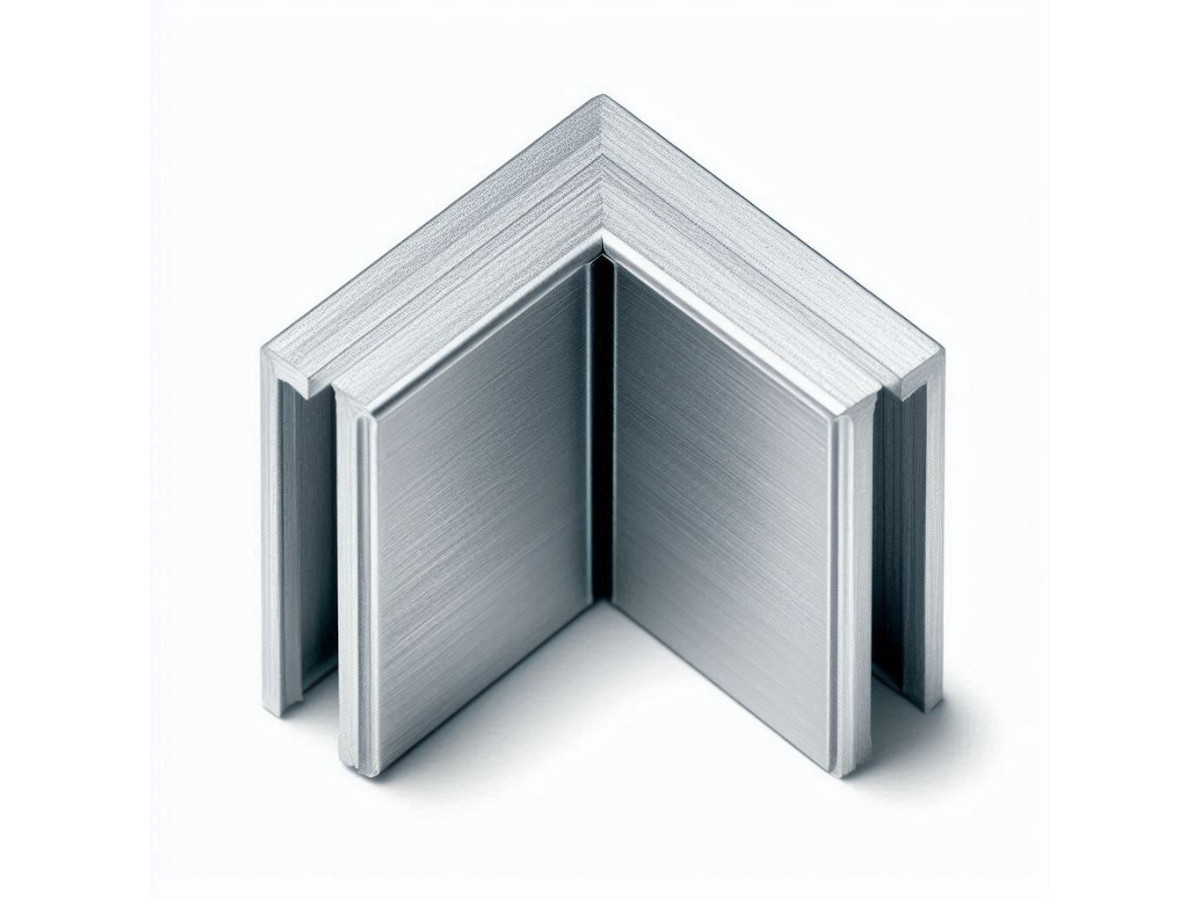Imagine a construction site where skyscrapers and bridges are being built. Every detail plays its role here. And one of the key roles is played by elements invisible at first glance - metal profiles. One of these profiles, simple and at the same time universal, is an aluminum corner. It seamlessly but securely connects the various parts of the structure, ensuring strength and durability.
Processing stages
An aluminum corner is not just a metal profile, but the result of a complex technological process that requires precision and compliance with certain parameters:
- obtaining an aluminum billet;
- rolling of ingots;
- cutting the workpiece;
- shaping;
- quality control.
The first stage is the melting of aluminum ingots in special furnaces. In this case, the aluminum is melted and cleaned of impurities. Alloying elements are added to the molten mixture, including copper, magnesium, silicon, etc., all of which give the alloy the necessary properties: strength, resistance to rust, ductility, etc. The molten alloy is poured into special molds, where it cools and hardens, forming ingots .
They undergo pre-treatment: they are heated, cleaned of scale and the surface is leveled. The ingots are passed through the rolls of a rolling mill at high temperatures. Under the influence of pressure, they are deformed and take the shape of a workpiece - a flat strip. To give the workpiece precise dimensions and improve its properties, cold rolling is used. In this case, the workpiece passes through several successive passes between rollers at room temperature.
The resulting strip is cut into segments of a certain width. For this purpose, special saws are used that ensure geometric accuracy. The strips are fed to a roll forming mill, where they pass between special rollers. The latter give the product a given shape - a profile in the form of a corner. To relieve internal stresses and improve ductility, it is subjected to annealing - heating to a certain temperature, followed by slow cooling.
Each profile is carefully inspected for cracks, burrs, size discrepancies, geometric parameters are checked: width of the shelves, metal thickness, angle between the shelves. For some types, mechanical tests are carried out for strength, ductility and other characteristics.
Types and features of the profile
Aluminum angles can have the same or different widths on both arms. You can also find profiled or perforated products on the market. Products are distinguished, among other things, by type of material:
- AD31 or 6060 is one of the most common types, with good rust resistance, ductility and ease of processing. Widely used in construction, furniture and decorative items.
- D16T is a high-strength alloy with increased strength and rigidity. It is used in structures subject to increased loads, in particular in aircraft and mechanical engineering.
- AK7 - this alloy with high corrosion resistance is used in aggressive environments. Mainly found in the chemical industry and shipbuilding.
For structures subject to significant loads, more durable alloys are chosen, for example, D16T. In aggressive environments, alloys with increased corrosion resistance, such as AK7, are used. At high temperatures, heat-resistant alloys are used. The price of the alloy depends on its composition and alloying elements. Such alloys have a relatively low density, so they are lightweight.
Where are corners used?
Such rolled metal serves as the basis for creating lightweight and durable building frames, especially in modern architecture, where large windows and panoramic views are valued. Corners are used to create ventilated facades, giving buildings a stylish and modern look. They are also indispensable in the construction of internal partitions, creating light and durable structures. They often serve as the basis for the manufacture of window and door profiles, providing strength and tightness.
Aluminum alloy corners are used to create the frames of cabinets, chests of drawers and other furniture, and serve as the basis for the frames of sofas, armchairs and other upholstered furniture. They are often purchased to create seat frames, interior elements and other car parts. Corners are used to create lightweight and mobile exhibition stands, various decorative elements, billboards and other structures. Aluminum corners can be found in the most unexpected places: in sports equipment, in household appliances and even in spacecraft.

